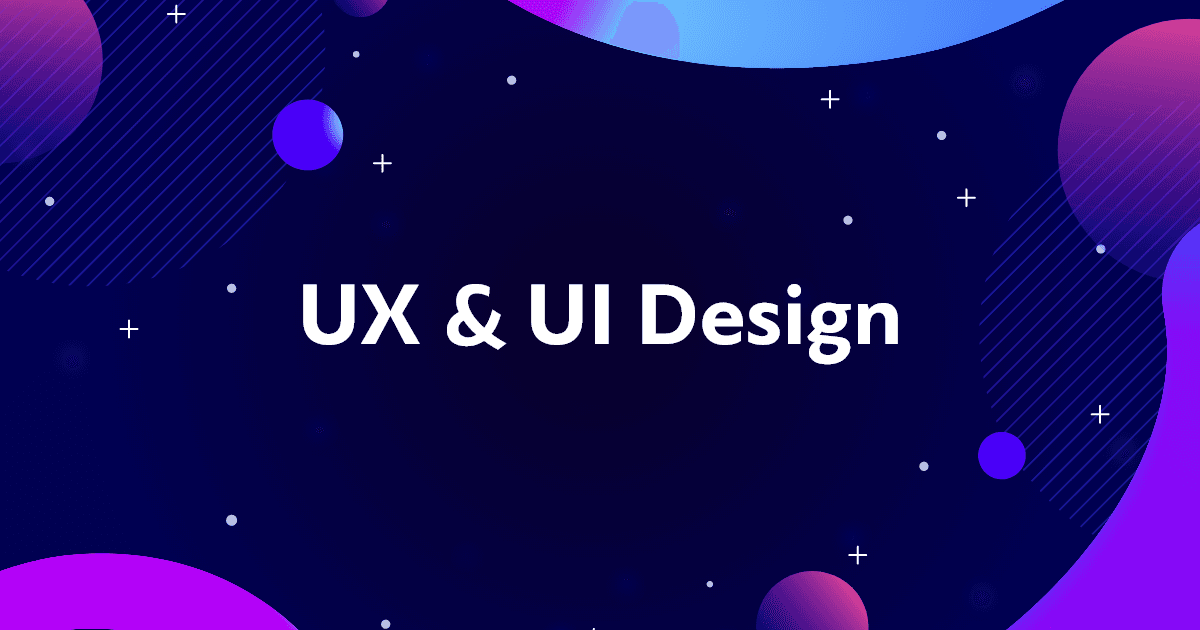
Top UI/UX Design Trends to Watch Out for in 2023
March 12, 2023
PouyaSadri
Stay ahead of the game with our list of top UI/UX design trends to watch out for in 2023. From immersive experiences to sustainable design, discover the latest trends shaping the future of user experience design.
Tips
User Interface (UI)
User Experience (UX)
As we prepare to enter 2023, it's important to take a closer look at the evolving UI and UX trends that are constantly finding new uses and ways to enhance the user's experience. In this article, we've highlighted the top trends that we believe will persist and gain even more traction in the coming year. From innovative designs to enhanced user engagement, read on to discover the latest UI/UX trends that are set to shape the future of digital experiences in 2023.
UI 2023 Trends
1. Motion Design
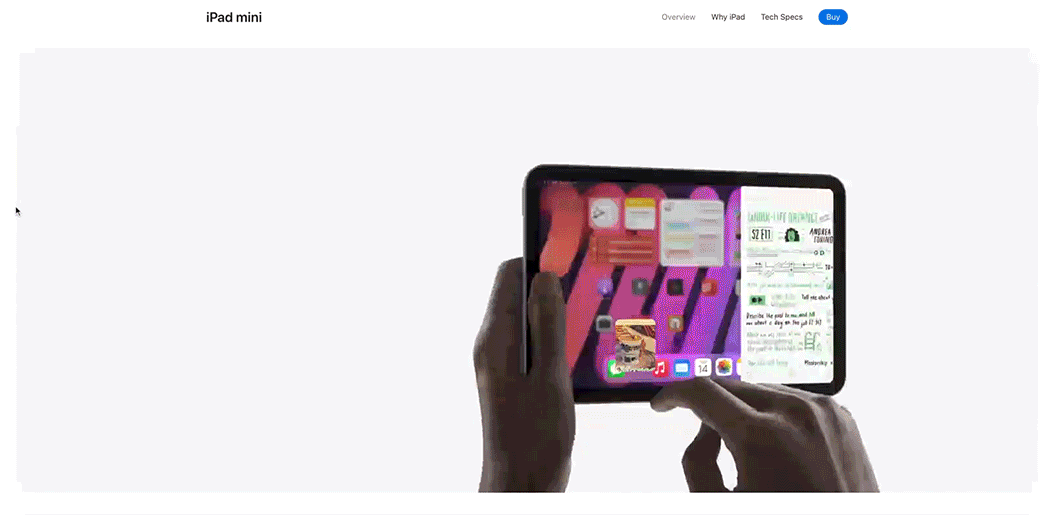
As the internet, browsers, and devices become more powerful, motion design has become a crucial part of interface design. With advancements in animation technology and video compression, designers can now incorporate more complex and nuanced motion into interfaces without sacrificing speed or efficiency. Additionally, intuitive animation programs and animation libraries have made it easier for designers to experiment with motion, resulting in more dynamic and visually appealing experiences.
Designers can now create immersive modes of digital interactivity by mimicking the momentum and physics of physical products. In the future, motion design will continue to grow in importance, particularly in video content. Curated video snippets, dynamic backgrounds, and quirky video popups will become essential in creating captivating brand experiences. Stay ahead of the curve and incorporate motion design into your interface for a more engaging and memorable user experience.
2. Scrollytelling
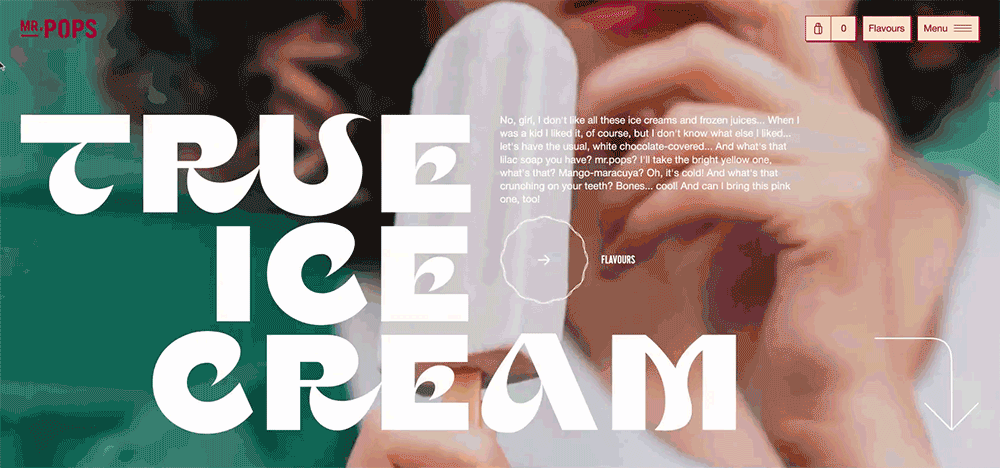
Scrollytelling, also known as immersive scrolling, is a subset of motion design that is becoming increasingly popular in enriching the interaction between users and products. While scrollytelling animations may not directly impact a product's utility, they add unmatched visual appeal and create effective transitions between different sets of information.
Immersive scrolling is particularly useful in landing page designs, as it brings products to life despite having more limited content and functionality. Scrollytelling's storytelling capabilities provide a type of narration that elevates content, delights users, improves brand perception, and drives desirability.
As scrollytelling continues to evolve, we are seeing countless new explorations of this type of storytelling on the internet. Incorporating scrollytelling into your interface design can help create a memorable and engaging user experience that sets your brand apart. Keep an eye on this emerging trend and discover how it can take your digital storytelling to the next level.
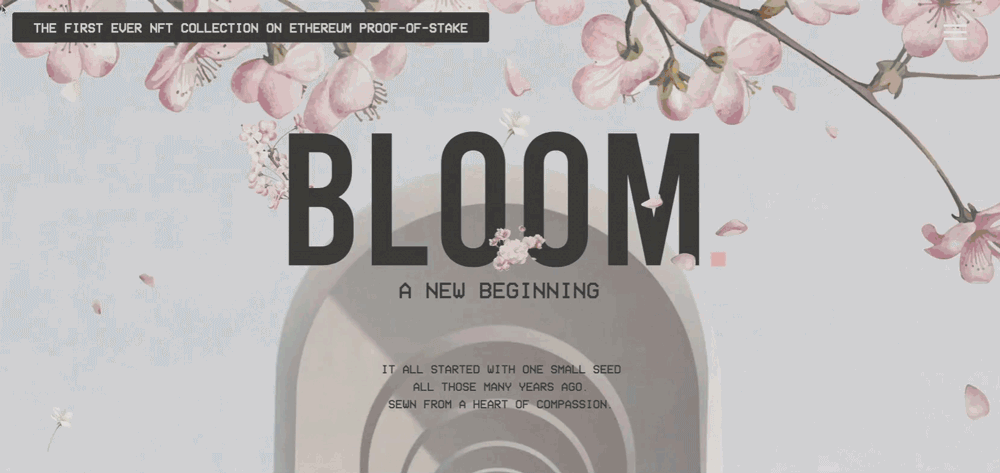
3. New Bolder Minimalism

Minimalism is a design trend that is here to stay, but its evolution in the upcoming year will bring a more nuanced and evolved take on the existing concept. While the essential elements of minimalism, such as functional objects, negative space, flat elements, easy navigation, and limited color palettes, remain the same, there will be a few notable differences.
Monochromatic palettes will be the key to creating a modern minimalist look, with large flat color shapes, substantial padding, and rounded edges resulting in decluttered yet 'rich' interfaces. Elements will maintain a rounded and soft look, combined with flat graphics and contrasting typography. The minimalist interfaces of the future will enable more personalized and expressive experiences without sacrificing clarity, readability, or easy navigation.
Stay ahead of the trend by incorporating these design elements into your next project, creating a minimalist interface that is both modern and functional.
4. Happy Colors / Dopamine inducing palettes
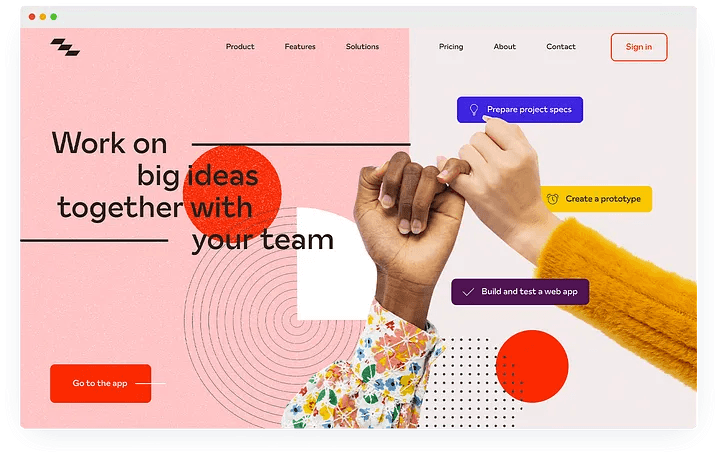
The trend of 'dopamine dressing' is not just limited to fashion; it is also making its way into interface design. This trend is centered around the symbolic qualities of bold and happy hues, and it builds off of the retro comeback of recent years. Color blocking, mild textures, and therapeutic hues combined with retro elements and superimposed on brutalist and even anti-design layouts will make bold statements to users from the 70s all the way to gen Z.
This trend is proliferating so much that even large brands are taking notice. Despite otherwise more toned-down brand aesthetics, consumer goods giants are choosing to dress their (digital) campaigns in dopamine colors as standalone initiatives without having to revamp their core brand.
As this trend continues to evolve, designers must be prepared to incorporate bold and happy hues into their interfaces in a way that complements the brand and resonates with users. By doing so, they can tap into the power of dopamine dressing and create a memorable and impactful user experience.
5. Aurora Gradients

Despite the Instagram redesign, gradients are still a popular trend in design. Known as aurora gradients, these bold color schemes blend light complementaries to create ethereal and contemporary moods, with subtle nods to the 80s and 90s. This trend is expanding beyond the tech industry and finding itself in brand and web assets across various industries. Aurora gradients get their name from the Northern Lights and can make a design look elevated, mystical, expressive, and smooth.
UX 2023 Trends
1. Cross-device experience

In today's world, customers demand seamless experiences across all their devices. Apple has set the bar high with their immersive product ecosystems, and users expect other digital products to follow suit. As a result, many products are striving to become device-agnostic while maintaining a consistent and reliable experience in real-time.
But cross-device operability isn't just a habit-turned-expectation; it also provides new and valuable uses for users. UX researchers and engineers need to improve existing cross-device experiences by considering edge cases and unusual maneuvers in the user journey. They also need to identify new opportunities that address user needs and pain points in this context. As we move forward, it's clear that cross-device operability will continue to be a crucial aspect of modern application design.
2. Emotional design
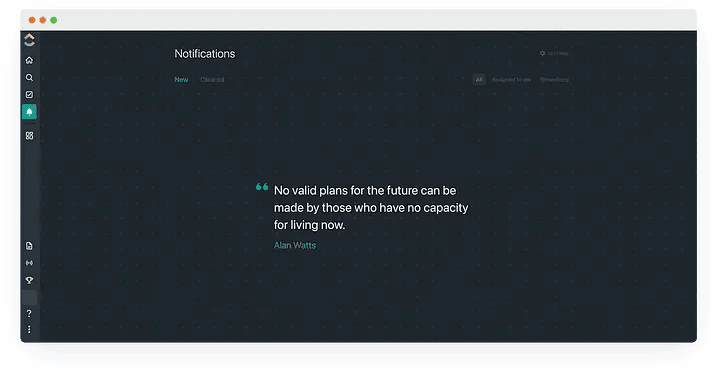
In addition to the research, design teams will also need to utilize emotional design frameworks such as the three levels of emotional design - visceral, behavioral, and reflective. Visceral design appeals to a user's instincts and emotions, creating an immediate and intuitive response to a product. Behavioral design focuses on the pleasure and efficiency of use, ensuring that users feel in control and satisfied with the product's functionality. Reflective design focuses on the user's memories and associations with the product, creating a lasting emotional connection.
Furthermore, designing for emotions will require collaboration across teams, with designers, developers, and marketers working together to create a cohesive emotional narrative. Storytelling will be a key component in creating emotionally engaging products that resonate with users and leave a lasting impact.
Overall, the increased emphasis on emotional design will push designers to create products that are not only functional but also deeply resonant and meaningful to users.
3. (Hyper) Personalization
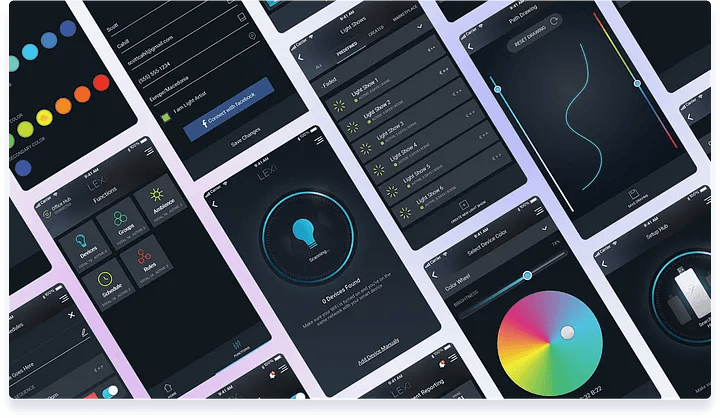
Personalization will be key to building emotional connections between users and digital products. UX researchers will need to explore new ways to provide personalized system feedback by collecting contextual data to establish deeper and more beneficial relationships. With the rise of IoT systems, this will require an exploration of the capabilities of these systems to achieve more seamless and personalized experiences. By utilizing new types of data collection, such as user preferences, behavior patterns, and even biometric data, researchers can design systems that can better anticipate user needs and offer more relevant and emotionally resonant interactions. This will not only lead to increased user satisfaction and loyalty but also help to differentiate products in an increasingly competitive market.
4. Micro-interactions

Micro-interactions are becoming increasingly important in UX design, and they will continue to be a focus of UX research. These interactions can greatly improve the user experience by providing immediate feedback, creating a sense of satisfaction, and increasing user engagement. To improve the fidelity of human-computer interaction, UX researchers will need to have a deep understanding of the process flow and how users interact with the system.
Beyond just emotional design and UI delight, micro-interactions can also be used to streamline processes, reduce errors, and enhance overall usability. To achieve this, UX researchers will need to look at user psychology, mental mapping, and physical product precedents to identify new opportunities for well-designed and intuitive system feedback.
Overall, micro-interactions will continue to be an important area of UX research and will play a critical role in creating successful digital products.
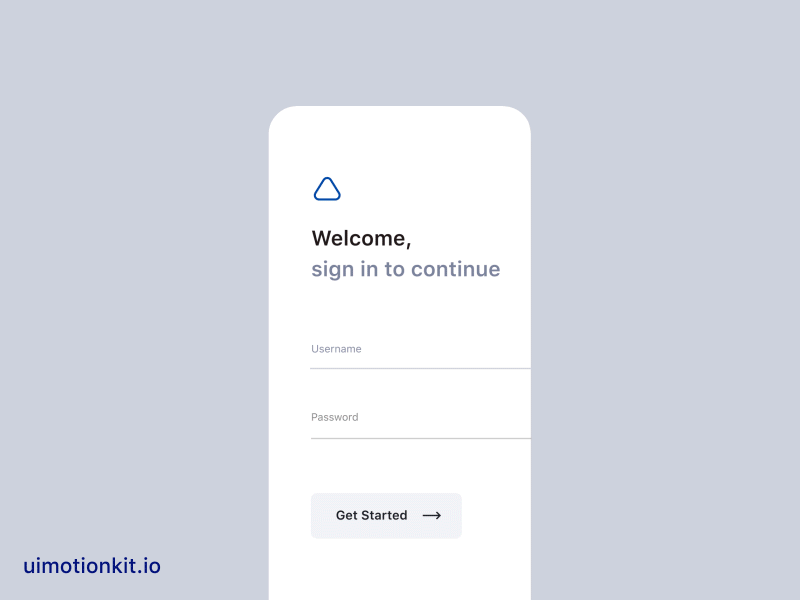
*Honourable mention
Sustainability in tech

Sustainability is a critical factor that involves meeting current needs without harming the ability of future generations to meet their own. It's crucial to achieve sustainability not only to prevent environmental degradation but also to maintain and improve the quality of life in environmental, social, and economic terms.
As a part of the industry, we understand that our practices contribute to unsustainable habits. It's our shared responsibility as digital architects to promote and incorporate sustainability into the everyday user experience. We aim to provide clear and concise information and interface elements to encourage environmentally and socially conscious decisions among our users and consumers.
Misinformation and greenwashing lead to distrust and dissuade customers. Therefore, we prioritize presenting our green efforts transparently and honestly, including acknowledging our product offerings' shortcomings in promoting sustainability.
In addition to promoting sustainable user choices, UI/UX designers can contribute to sustainability in various ways. There are numerous tech startups addressing issues such as climate change, waste, and overconsumption. Creating user-friendly experiences for these technologies will be critical to their success and an excellent way to support the sustainability movement. Additionally, we can initiate sustainability discussions in our workplace. This could involve promoting eco-friendly IT infrastructure, choosing environmentally-friendly hosting services, or implementing office green initiatives. Regardless of the scale, opportunities for positive impact exist in all areas.
UI and UX design trends are constantly evolving to meet the changing needs and expectations of users. In addition to addressing current pain points, designers must also anticipate and address future challenges. As technology continues to advance at a rapid pace, it's important to keep in mind that these trends are just a small part of the ongoing task of creating intuitive and delightful user experiences. While it's helpful to use these trends as a guide, designers should also feel empowered to push beyond and explore new possibilities in human-computer interaction. By staying innovative and forward-thinking, designers can create experiences that are not only helpful and intuitive, but also a pleasure to use.
Looking for top-notch UI/UX design services that will help your business stand out in a crowded digital landscape? Look no further than our expert team of designers and experience the difference in user satisfaction and engagement.